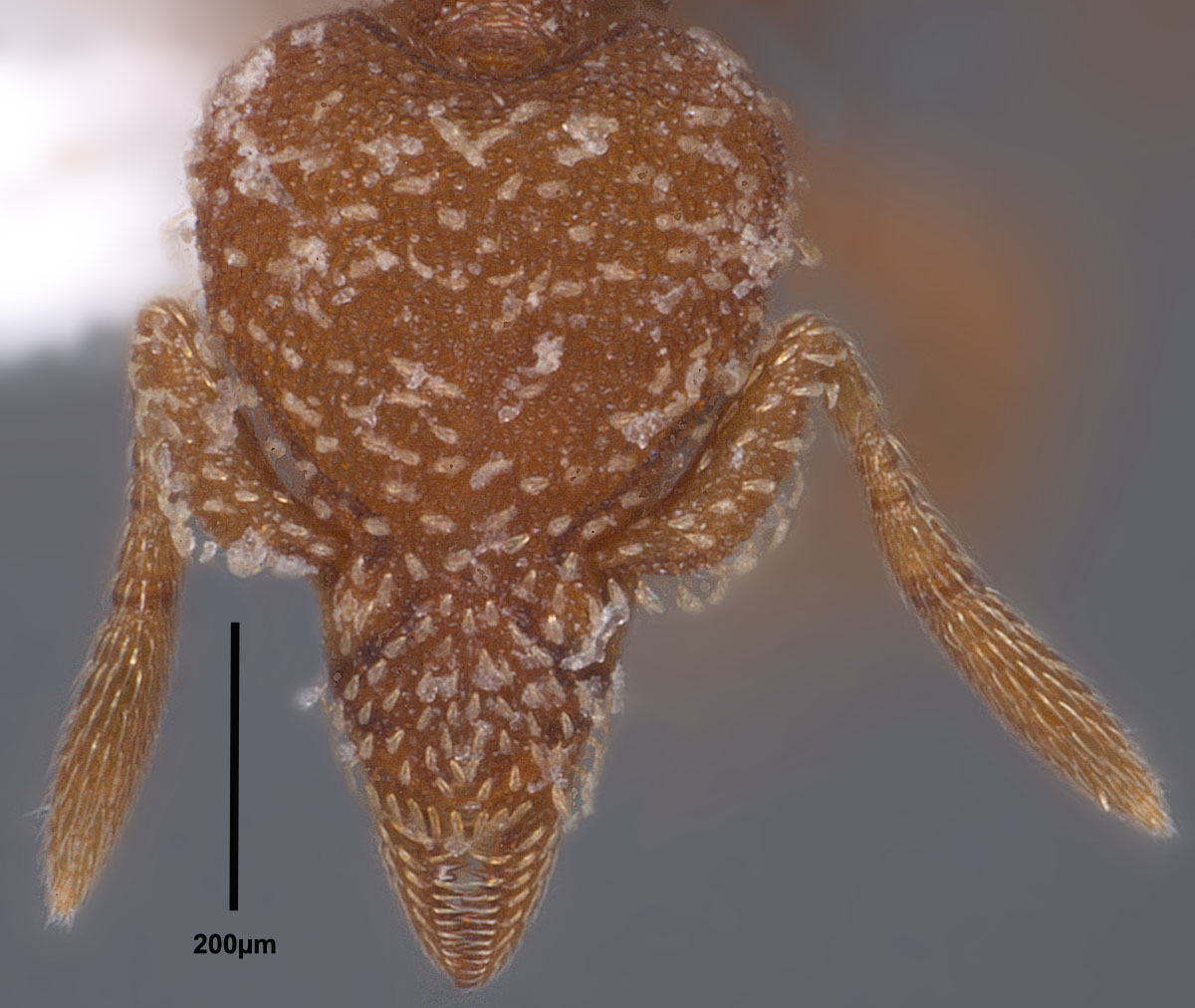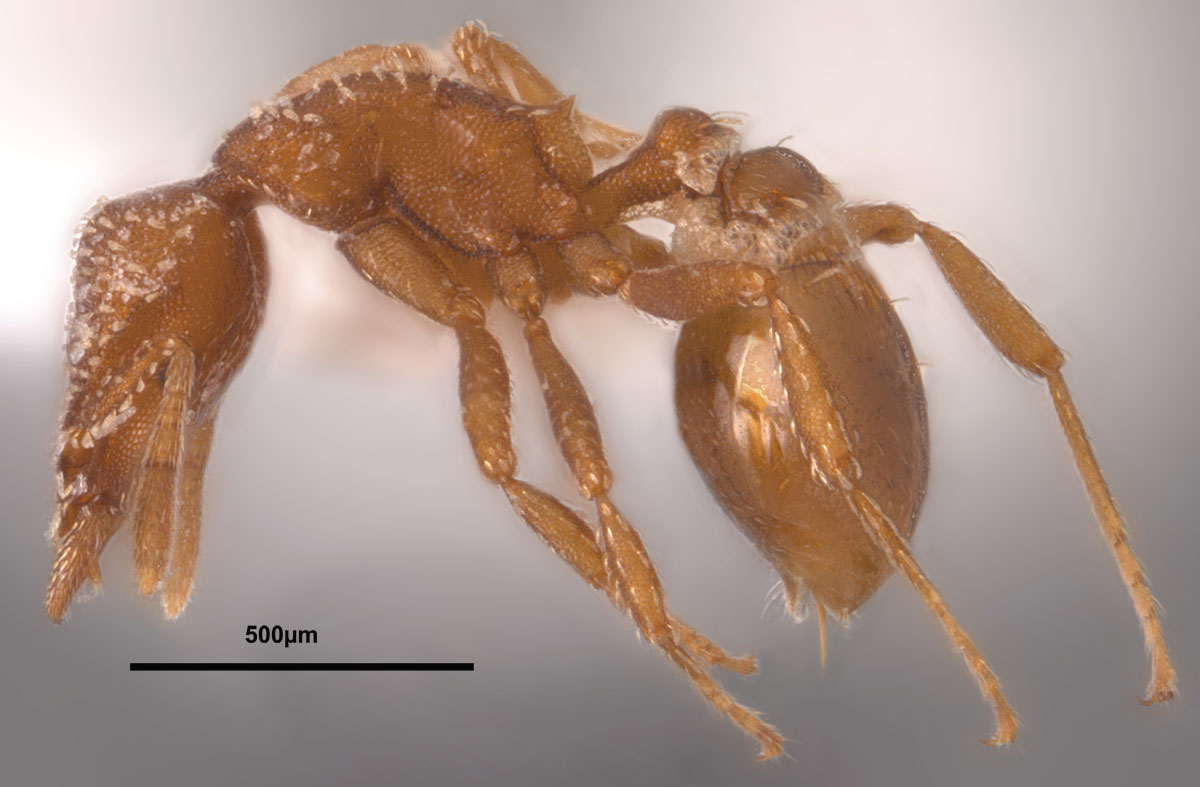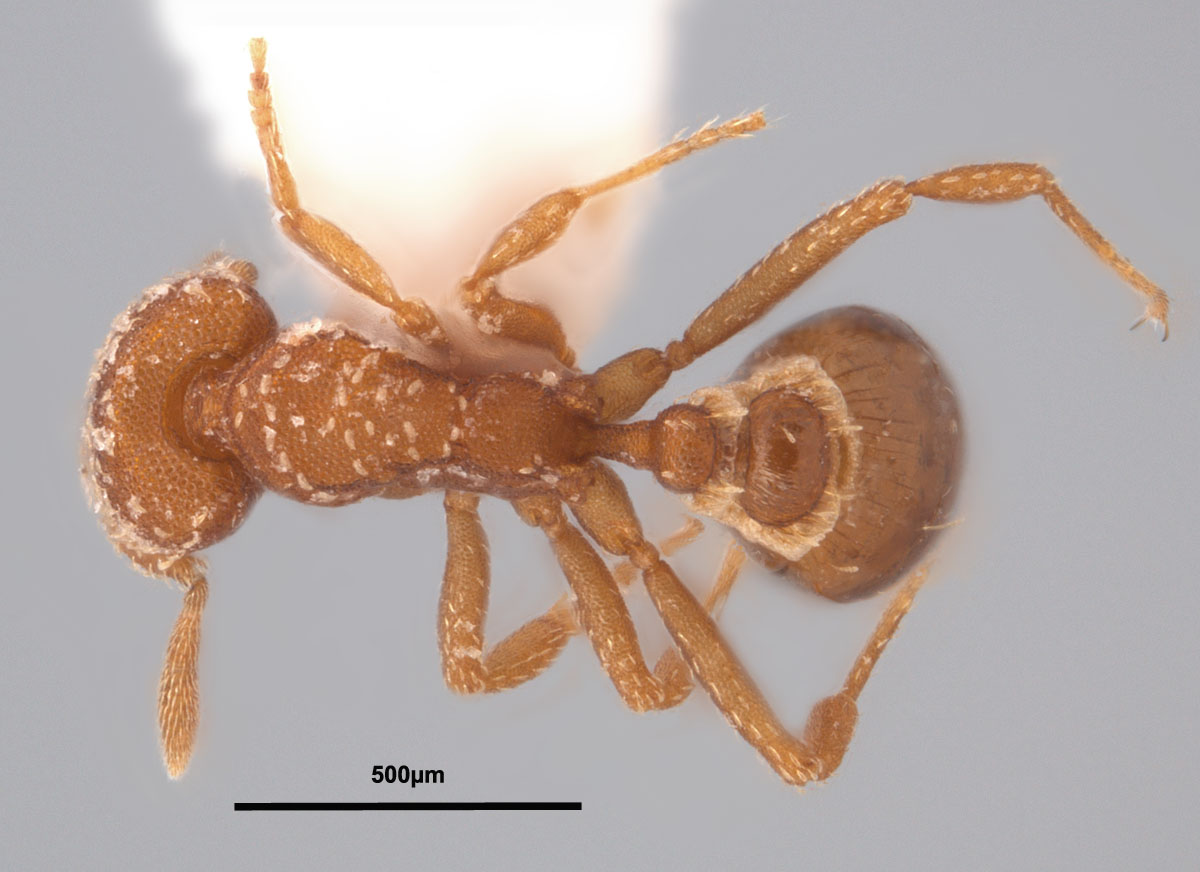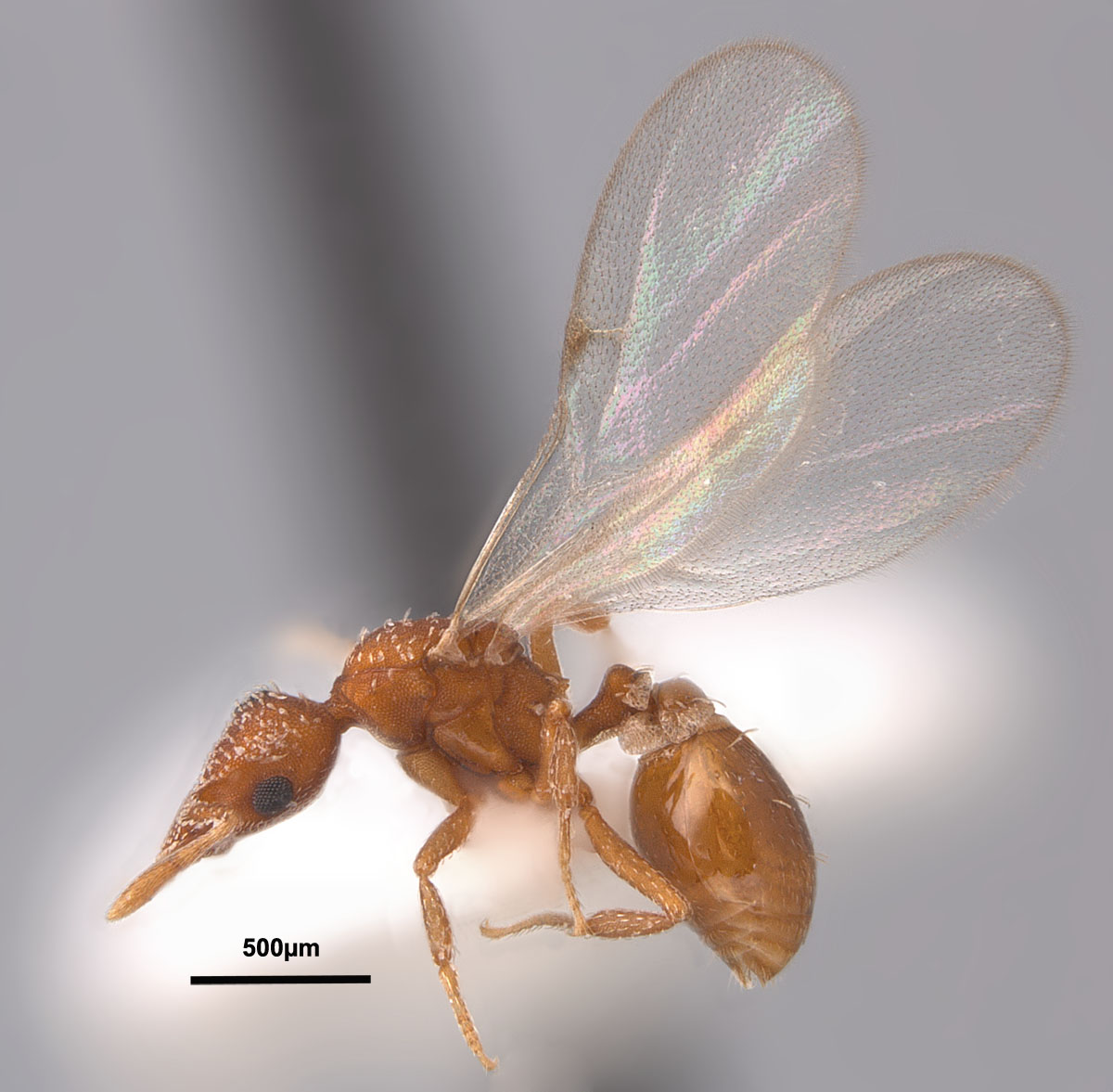Subfamily MYRMICINAE
Tribe DACETINI Pyramica epinotalis (Weber) |
|
Pyramica epinotalis, full face view of worker (click photo to enlarge). |
Pyramica epinotalis, profile view of worker (click photo to enlarge). |
Pyramica epinotalis, dorsal view of worker (click photo to enlarge). |
Pyramica epinotalis, full face view of queen (click photo to enlarge). |
Pyramica epinotalis, profile view of queen (click photo to enlarge). |
|
Introduction Pyramica epinotalis is an arboreal dacetine ant previously known only from Brazil, Costa Rica, Ecuador, and southern Mexico, but recently discovered to occur in southern Florida and southern Louisiana. Identification Worker (Description modified from Bolton): Total length 1.9-2.1 mm. Head wedge-shaped. Color yellowish-brown, appendages only slightly paler. Entire head including clypeus with reticulate-punctate sculpture. Mandibles subtriangular, lacking diastema; nine acute teeth present following basal lamella; third tooth from basal lamella spiniform, elongate and distinctly longer than other teeth, with subsequent teeth alternating in length with the fifth being longer than the fourth and the seventh being longer than the sixth, and the remaining two teeth smaller and blunter. Clypeus somewhat pentagonal shaped, narrowing anteriorly, and with anterior margin slightly convex. Dorsum of clypeus with numerous clavate hairs directed anteriorly or away from midline of clypeus; clypeal margin with similarly shaped clavate hairs all curving anteriorly toward midline of clypeus; remainder of head with slightly larger clavate to spoon-shaped hairs that curve toward midline of head; elongate flagelliform cephalic hairs absent; and leading edge of scape with a row of elongate, curved hairs, all of which curve toward the base of the scape or are directed downward. Eye large with 5-7 ommatidia in longest diameter. Alate Female: Similar to worker, but larger (total length approximately 2.5 mm), ocelli present, mesosoma enlarged with typical modifications for flight muscles, wings present, and katepisternum mostly lacking sculpture. This species is easily differentiated from other species known from the US by the combination of having the third tooth (from basal lamella) on mandible longer than the other teeth, the mesosoma of the worker being completely reticulate-punctate, having a curved row of spoon-shaped hairs on the pronotal dorsum, a distinct propodeal lamella, a ventral spongiform crest beneath the petiole, and fan-shaped patches of spongiform tissue on the petiole and postpetiole. Currently, the only other species reported from the US with which P. epinotalis might be confused is P. margaritae, another introduced species in the schulzi group. Pyramica margaritae is the only other species known to occur in the United States that has sculpture on the entire side of the mesosoma; however, P. margaritae lacks a curved row of spoon-shaped hairs on the pronotal dorsum, has much longer propodeal spines, lacks a propodeal lamella, lacks spongiform bodies beneath the petiole, and has reduced spongiform tissue present beneath the postpetiole. Biology and Economic Importance This species is unlikely to pose any economic problems. For more info about this species, see Chen et al. 2012. Distribution Literature Cited Bolton, B. 2000. The Ant Tribe Dacetini. Memoirs of the American Entomological Institute. Vol. 65, part 1-2. Hölldobler, B., and E.O. Wilson. 1990. The Ants. Belknap Press of Harvard University Press, Cambridge, MA. 732 pp. Chen, X., J. A. MacGown, B. J. Adams, K. A. Parys, R. M. Strecker, and L. Hooper-Bui.2012. First Record of Pyramica epinotalis (Hymenoptera: Formicidae) for the United States. Psyche. vol. 2012, Article ID 850893, 7 pages, 2012. doi:10.1155/2012/850893 [pdf] |
|







